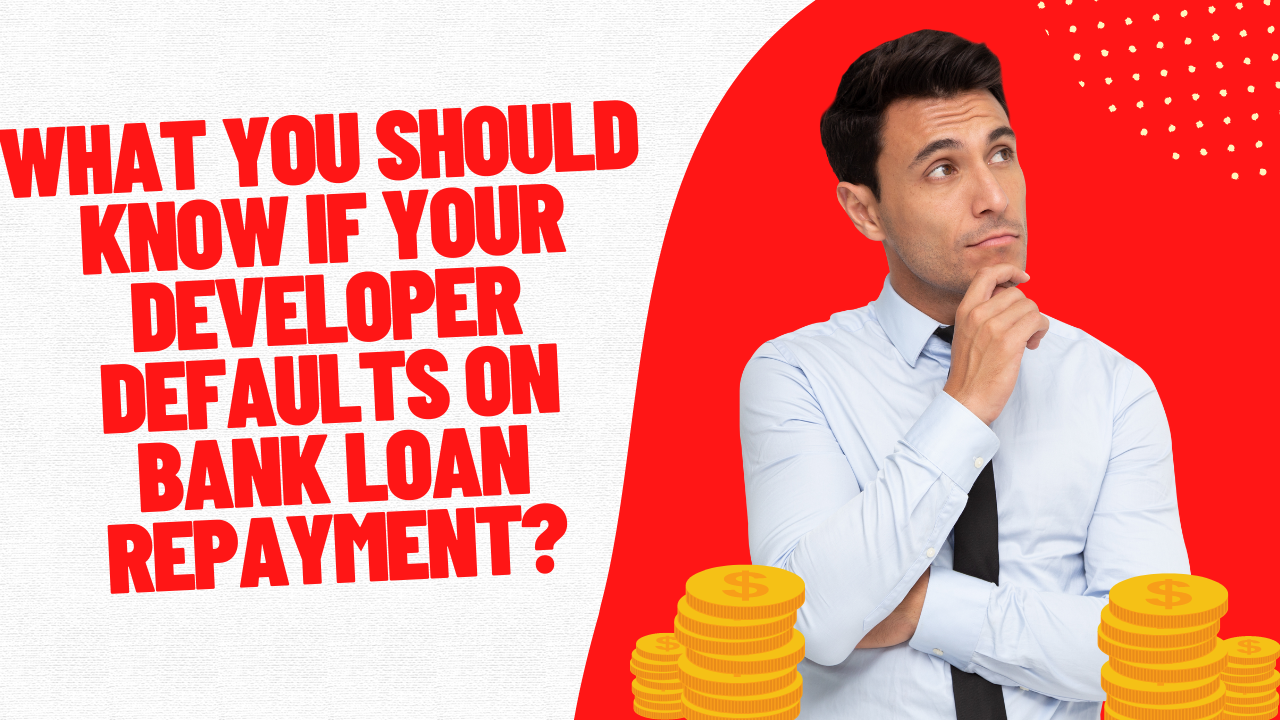Understanding the implications and potential risks of a developer’s loan default is crucial for investors and buyers in real estate projects. By being aware of their rights, legal remedies, and seeking expert advice, affected parties can navigate through challenging situations and protect their interests in the project.
Understanding Loan Defaults and Developer Responsibilities:
- Loan Default: A loan default occurs when a borrower, in this case, the developer, fails to meet the agreed-upon terms and conditions of the loan agreement, such as missing scheduled loan payments or violating specific covenants.
- Developer Responsibilities: As the borrower, the developer is responsible for repaying the loan according to the terms outlined in the loan agreement. This includes making timely payments, adhering to any financial covenants, and providing the necessary collateral to secure the loan.
Reviewing the Loan Agreement and Collateral:
- Loan Agreement: It is essential to review the loan agreement between the developer and the bank to understand the terms, repayment schedule, interest rates, and any penalties for default.
- Financial Covenants: Examine any financial covenants specified in the loan agreement, such as debt-to-equity ratios or cash flow requirements. Failure to meet these covenants may trigger a default.
- Collateral: Check the collateral provided by the developer to secure the loan. Collateral may include the project’s real estate, land, or other assets that the bank can seize in case of default.
Understanding the loan agreement and the collateral provided gives insight into the developer’s obligations and potential risks of loan default. It also helps assess the bank’s options in case of default, such as initiating foreclosure proceedings to recover the outstanding loan amount using the provided collateral. By being well-informed about the terms and conditions, investors and stakeholders can make more informed decisions and take appropriate actions in case of a developer’s loan default.
Communication with the Developer and Bank:
- Developer Communication: Initiate communication with the developer to understand the reasons for the loan default and their plan to address the situation.
- Bank Communication: Inform the bank about the developer’s loan default and inquire about their course of action to handle the situation.
Impact on the Project and Buyers:
- Project Delays or Abandonment: A developer’s loan default can lead to project delays or even project abandonment if the bank initiates foreclosure proceedings or takes control of the project.
- Uncertainty for Buyers: Buyers who have invested in the project may face uncertainty about the project’s completion and their investments.
- Possibility of Legal Disputes: Loan defaults can result in legal disputes between the developer, bank, and affected buyers, further complicating the situation.
- Market Perception: A developer’s loan default can negatively impact the market’s perception of the project and the developer’s financial stability, affecting future sales and investor confidence.
The developer’s loan default can have significant ramifications for the ongoing project and its buyers. Effective communication with both the developer and the bank is crucial to understand the implications and potential courses of action. Buyers and stakeholders need to stay informed about the project’s status and be prepared to take necessary measures to safeguard their interests. In case of uncertainty, seeking legal advice and expert consultation can help navigate through the complexities and explore potential solutions.
Legal Remedies and Foreclosure Process:
- Legal Remedies for the Bank: In case of a developer’s loan default, the bank may initiate legal proceedings to recover the outstanding loan amount. This process is known as foreclosure.
- Foreclosure Process: Foreclosure allows the bank to take possession of the collateral (e.g., the project’s real estate) to sell it and recover the loan amount. The process may involve court proceedings and can vary based on local laws and regulations.
Protection for Buyers and Investors:
- Understanding Rights and Contracts: Buyers and investors should carefully review their purchase contracts and agreements to understand their rights and protections in case of a developer’s loan default.
- Escrow Accounts: Escrow accounts can provide protection by holding buyers’ funds until specific project milestones are achieved. If the project faces challenges, funds in escrow can be returned to buyers.
Buyer’s Legal Rights:
- Some jurisdictions offer specific legal protections for buyers and investors in real estate projects, such as the right to a refund or compensation if the developer defaults.
- Seek Legal Advice: In case of a developer’s loan default, buyers and investors should consult with a real estate attorney to understand their legal rights and explore potential remedies.
Title Insurance:
- Title insurance can provide protection for buyers by ensuring that the title to the property is clear and free from any encumbrances or claims.
- Buyers should consider obtaining title insurance to mitigate potential risks related to the developer’s loan default.
Protecting the interests of buyers and investors is essential in case of a developer’s loan default. Understanding legal remedies like foreclosure and seeking professional legal advice can help stakeholders navigate through the situation and explore potential solutions. Buyers and investors should be aware of their rights, contractual protections, and take proactive measures to safeguard their investments in real estate projects.
Alternative Solutions and Negotiations:
- Loan Restructuring: The developer and the bank may explore loan restructuring options, such as extending the loan term, reducing interest rates, or modifying repayment terms to facilitate loan repayment.
- Additional Funding: The developer may seek additional funding from other sources to repay the loan or complete the project.
- Developer Partnerships: Forming partnerships with other developers or investors to infuse capital and continue the project may be considered.
- Negotiating with the Bank: The developer can negotiate with the bank to find a mutually agreeable solution that allows them to repay the loan and complete the project.
Monitoring and Future Precautions:
- Stay Informed: Buyers and investors should closely monitor the project’s progress, the developer’s financial situation, and any updates from the bank or relevant authorities.
- Risk Mitigation: Future investors can mitigate risks by conducting thorough due diligence before investing in a real estate project. Evaluating the developer’s financial health, track record, and project viability is crucial.
- Diversification: Diversifying investments across multiple projects or developers can help spread risk and reduce exposure to a single developer’s loan default.
By exploring alternative solutions and engaging in negotiations, developers and banks can work towards finding viable ways to address the loan default and ensure the project’s completion. For buyers and investors, proactive monitoring and due diligence are essential to safeguard their interests and make informed decisions. Learning from the experience and implementing future precautions can help minimize the impact of a developer’s loan default and protect stakeholders in real estate ventures.
FAQ’s (Frequently Asked Questions):
- What should I do if I am a buyer and the developer defaults on the bank loan?
- Consult with a real estate attorney to understand your rights and legal options.
- Review your purchase agreement and explore protections offered, such as escrow accounts or title insurance.
- Stay informed about the project’s status and any developments related to the loan default.
- Can a developer recover from a loan default and complete the project?
- It is possible for a developer to recover by seeking alternative funding, renegotiating with the bank, or forming partnerships.
- The outcome depends on the developer’s financial situation and the project’s viability.
- What are the potential risks for buyers and investors in a developer’s loan default?
- Project delays or abandonment can affect the investment’s returns.
- Buyers may face uncertainties regarding their investments and the project’s completion.
- Should I invest in a project with a developer who previously defaulted on loans?
- Investing in such a project requires careful consideration and due diligence.
- Evaluate the developer’s actions to address the previous default and the project’s current financial health.
Conclusion:
Monitoring ongoing projects and conducting due diligence before investing are key to mitigating risks and protecting investments. Alternative solutions and negotiations can be pursued to find viable ways to address loan defaults and ensure the successful completion of real estate ventures. By being proactive and well-informed, stakeholders can navigate through challenging situations and safeguard their interests in the real estate market.
Also Read:
- How to avail loan against your insurance policy?
- 6 Ways on How to Choose the Best Personal Loan
- 7 Good Reasons to Get a Personal Loan
- What is Amortized Loan? How Does it Work, What are Loan Types ?




